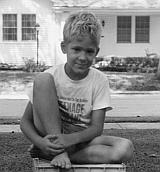|
Metairie (Images of America) |
|
|
|
From New Orleans to Jefferson & Back |
||
|
|
The first record of the land that would become Metairie is the Concession of 1720. It
was called the Chapitoulas Concession, named for the “river people” who lived along the bayou and the high natural
ridge which cut through the swamps on either side. The ridge and bayou ran from the Mississippi River near what is now Kenner
to Bayou St. John. Through the years "Chapitoulas" would evolve into "Tchoupitolas". No place in modern-day
Metairie holds that name but in New Orleans Tchoupitoulas Street follows the river from Audubon Park to the Warehouse District.
Bayou Tchoupitoulas would later be known as
Bayou Metairie and the top of ridge became Metairie Road. Europeans first damned the bayou at the river in order to drain
land for farming. Until the 1950s, the bayou still flowed beside Metairie Cemetery until it was filled to widen Metairie
Road. All that remains of it is a sliver in City Park along City Park Avenue. Until 1825, all of what is now Metairie as well as land to the east as far as Felicity Street
in New Orleans was included in the parish of Orleans. At that time the land was divided to create Jefferson Parish which
included the former New Orleans cities of Lafayette, Jefferson, and Carrollton. The City
of Lafayette, now the Garden District and the Irish Channel, served as the first seat of Jefferson Parish government. The
Egyptian Revival Jefferson Parish courthouse at 2219 Rousseau Street still exists. Jefferson City was bordered by Lowerline
Street, Washington Avenue, Toledano Street, and the Mississippi River. The City of Carrollton was the seat of Jefferson Parish
government from 1852 to 1874. The parish courthouse at 719 South Carrollton Avenue now serves as an Orleans Parish school
building. In the early years, Carrollton was a popular resort destination with a hotel, gardens, beer gardens, the first
streetcars as we know them today and a train station. Northline Street in Metairie marked the northernmost boundary of the
City of Carrollton. In 1874, after having changed several times, the current eastern boundary of Jefferson Parish was set
at the 17th Canal and Monticello Avenue.
|
|
|
|
||
